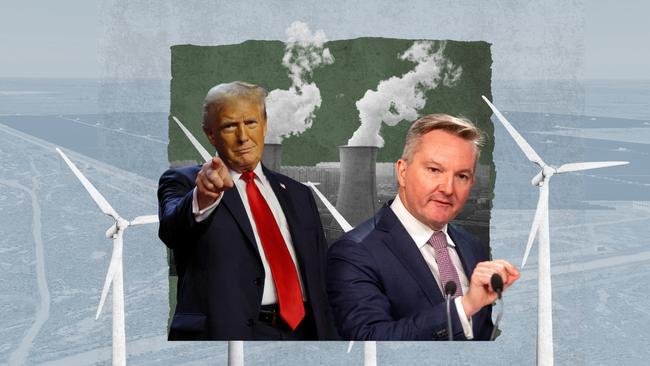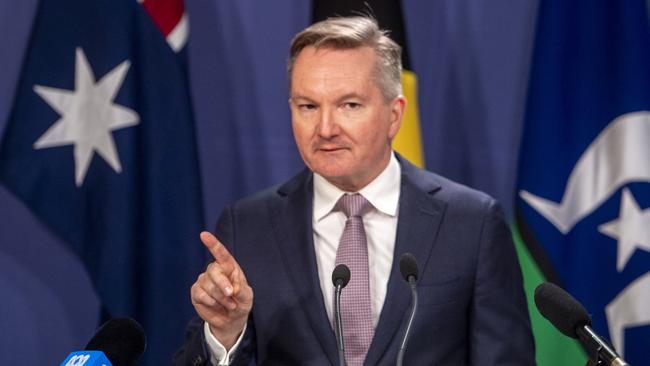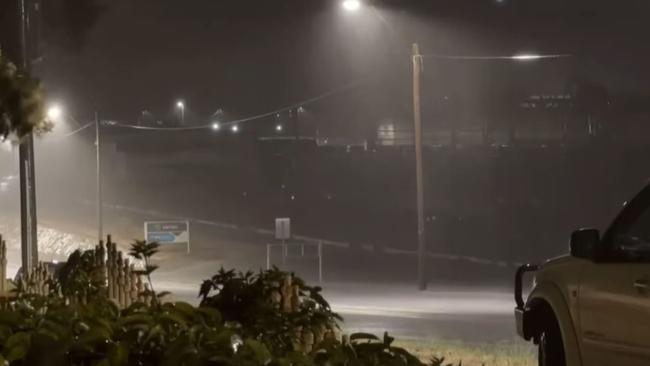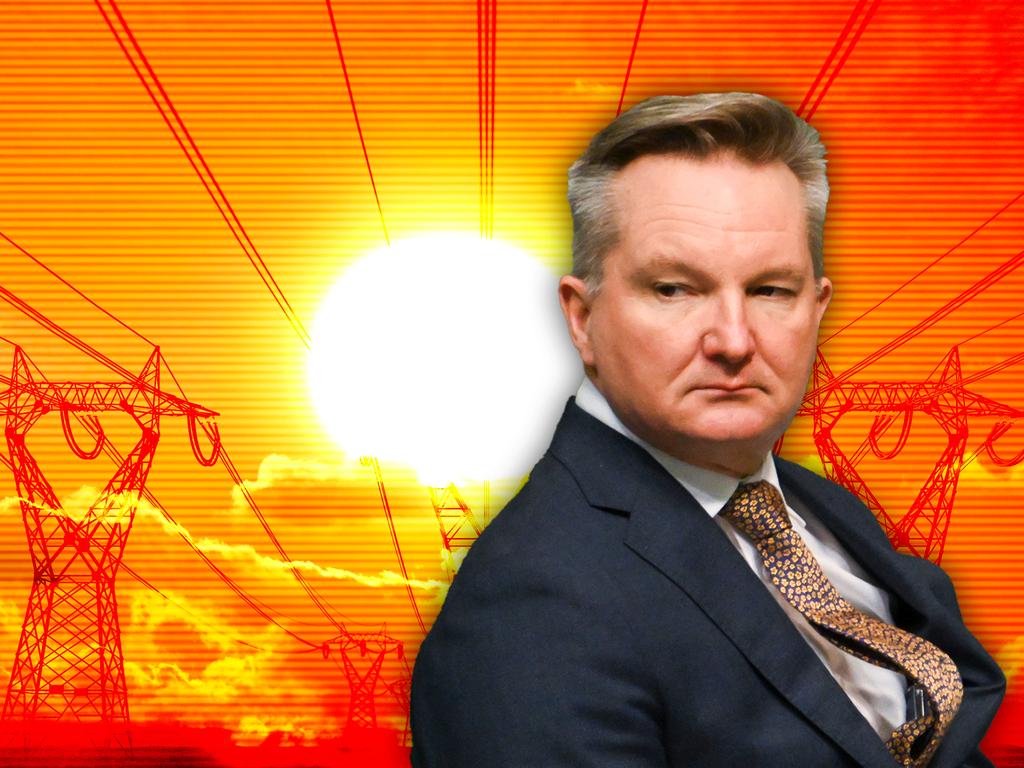
If that sounds crazy, Australia’s renewable power system builders have effectively admitted we will rely beyond 2050 on potentially being able to burn enough gas to power 15 million homes a day when the weather knocks out renewables. Nuclear power will take a long time to build, but it may be the only carbon-free way to achieve permanent stability in the electricity network.
This is the sham of our energy transition: politicians, journalists and many in the power industry don’t even admit that our renewables future will depend on gas.
Journalists will smash Coalition nuclear costings, as the ABC did on Friday morning ahead of the formal costings release later that day, but the same journalists will remain incurious about the total system cost of Labor’s plan.
Events in Australia, and in the US, in California and Texas, make it clear that severely adverse weather conditions for renewables can’t be offset by batteries alone because of frequency issues in the system.
Renewables-obsessed Germany has shed 8.4 per cent of industrial production during the past 18 months. European output is down 5 per cent and exports are down 3.8 per cent.
China, while experiencing a domestic slowdown, has lifted output 6 per cent and exports 15 per cent between quarter one 2023 and quarter two 2024.
Despite rolling out hundreds of new renewables projects, China increased total emissions of CO2 in the past 12 months by an estimated 0.2 per cent and now accounts for 32 per cent of global emissions. Its power grid remains 80 per cent coal-dependent.
China’s car exports are booming while European car companies are closing factories to relocate to the US and China.
Yet Europe did manage to cut total emissions by 8 per cent last year and is on course for another cut this year.

That may please its Greens activists, but EU politicians are worried about social cohesion and the effects on Europe’s workers of the industrial downturn. In Germany the right wing Alternative for Germany party is polling 18 per cent, behind only the conservative CDU (Christian Democrats). Chancellor Olaf Scholz’s three-party Coalition government collapsed last month and faces a wipe-out at the general election in February.
Everything in the climate action space is now up for grabs as president-elect Donald Trump declares “drill baby, drill”.
Yet even before Trump’s inauguration, UK-based website Carbon Brief expects total US CO2 emissions across all sectors to be up 2 per cent in 2024. The US this year produced record amounts of oil and gas despite President Joe Biden’s $1 trillion green spending under the Inflation Reduction Act of 2022.
The US was for the seventh consecutive year the world’s top producer of crude oil, at 13.1 million barrels a day.
It is the world’s number one gas producer at 1.35 trillion cubic metres, more than double that of number two producer Russia at 586 billion cubic metres, and dwarfing Australia’s output of 150 billion cubic metres (seventh in the world). This is Biden’s green energy transition.
Yet Australian politicians, led by Energy Minister Chris Bowen and former Liberal NSW treasurer Matt Kean, now chair of Labor’s Climate Change Authority, still plan to cut all coal-fired power generation here and keep insisting wind and solar are the cheapest forms of power.
Our country has had hints of how a continent-sized grid built on renewables could go wrong – the collapse of the South Australian power system on September 28, 2016, and the failure of renewables to kick in to save the local system in Broken Hill, NSW, in October.
Chris Uhlmann, still at the ABC at the time, received a lot of abuse for writing the facts about electricity grid stability in the wake of the South Australian debacle.
As this column reported on June 30, quoting electrical engineering posts on Climate Etc, the blog of climate scientist Judith Curry, the science of grid stability is about spinning machines that stabilise the alternating current system. These do not always sit well with renewables feed-ins.
Menzies Research Centre senior fellow Nick Cater got a guernsey on Climate Etc on December 5 in a piece by Russ Schussler, former head of system planning for the Georgia Transmission Company. Cater had previously written about the Broken Hill shutdown and the difficulty of synchronising storage batteries with the grid.
Large blackouts in recent years in California and Texas after extreme weather events highlight the same issue but on a much larger scale, pointing to serious problems with the science of electricity distribution. This is nothing to do with denying climate change, as Guardian Australia insists when presented with such reporting.

Now even the Australian Energy Market Operator has admitted our electricity transition will have to rely on gas for decades. On November 12, Uhlmann quoted Australian Energy Market Operator CEO Daniel Westerman saying “gas would be essential to ensure the reliability of the eastern grid to 2050 and beyond”.
Given likely gas shortages in Australia without a domestic gas reservation policy, Westerman admitted there may be times when there is too little gas during periods of low solar and wind output to keep gas-fired power stations running.
The politics of this have not yet hit home in Canberra: because of engineering difficulties, Australia may never reach a time when it does not need fossil fuel back-up of renewables.
Adi Paterson, former CEO of ANSTO (the Australian Nuclear Science and Technology Organisation), says there is too much politics in power system discussions and not enough engineering expertise.
“The Australian east coast power grid is the single biggest machine in the southern hemisphere. The grid is the precision timing signal for hundreds of industries across the country. This links not just to manufacturing but to things like landing aircraft safely and even to pumping sewage,” Dr Paterson says.
“People who use the grid to do precision manufacturing are starting to get the rattles. In fact, South Australia has lost 4000 precision manufacturing engineering jobs but no one will talk about it. Those jobs have gone to the west coast of the US.
“Data centres also depend on precision timing systems in the grid. All sorts of things are wobbling as the grid becomes less stable.”
This is an inevitable function of using inverters to introduce power from wind and solar into the synchronous grid stabilised by spinning turbines.
Dr Paterson believes neither AEMO nor the CSIRO understand the engineering challenges and are yet to consider weather events such as east coast blocking lows that could affect wind and sun for up to 10 days at a time.
He points to the latest GenCost report’s admission that the CSIRO had underestimated the life span of nuclear plants and their average operating capacity, but against all logic had found correcting both had no positive effect on the economics of nuclear.
Dr Paterson points out Gencost “does not actually measure the cost of power at the meter but the cost of generation to the fence. One of its fatal flaws is not measuring the cost of the big new grid needed to make renewables work.”
Interestingly, in considering the wider economic effects of renewables, France – 70 per cent-dependent on nuclear power – is not facing the same industrial downturn as Germany.







The world spent $US2 trillion on new renewable energy infrastructure this year yet carbon dioxide emissions rose, fossil fuel use increased and the hollowing out of Europe’s industrial base accelerated.